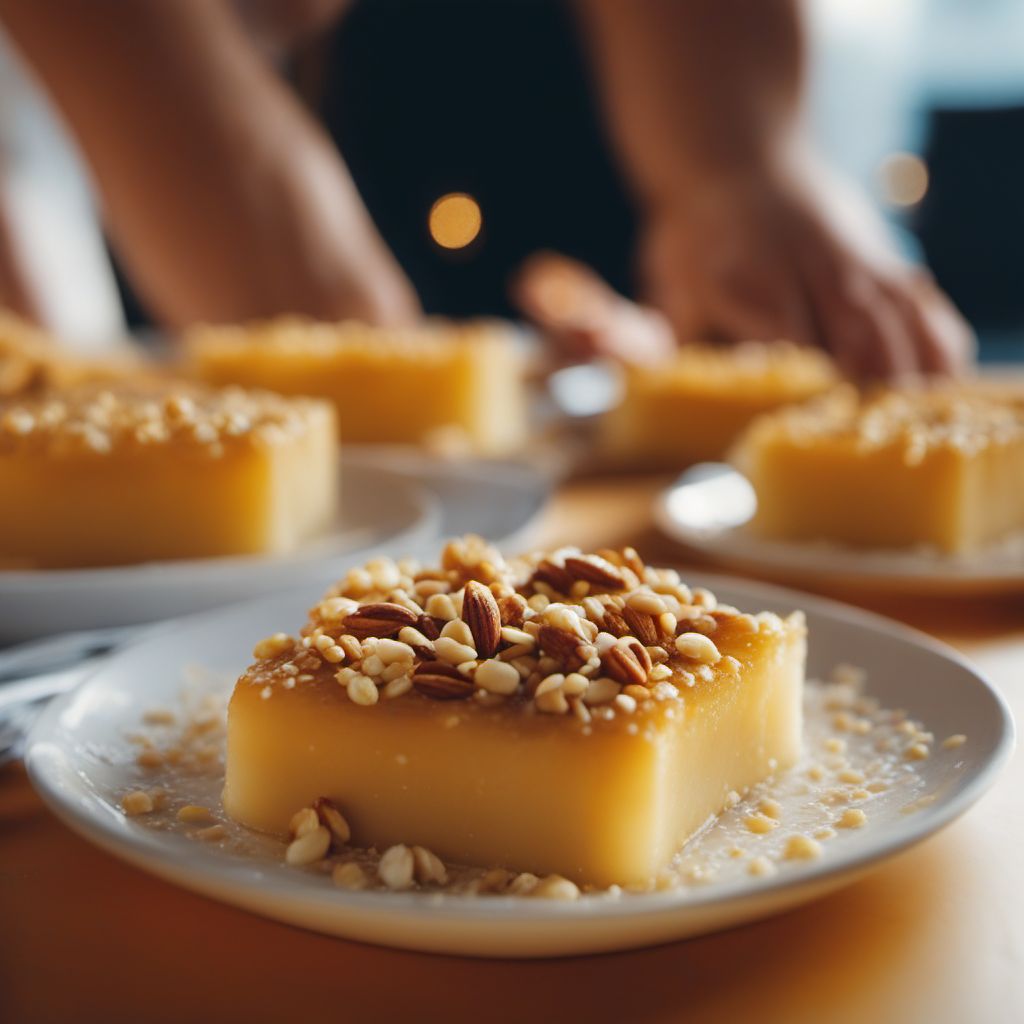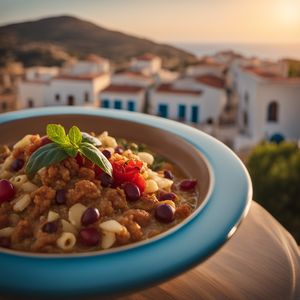
Dish
Hamalia
Hamalia is made with semolina, honey, and a mixture of nuts such as almonds, walnuts, and pistachios. The semolina is cooked in a mixture of water and honey until it thickens, and then the nuts are added. The mixture is then poured into a baking dish and baked until golden brown. This dessert is high in carbohydrates and calories due to the use of semolina and honey, but it is also a good source of protein and healthy fats due to the use of nuts.
Origins and history
Hamalia is a traditional dessert from Greece, and is often served at festivals and celebrations. It is a popular dessert in the Peloponnese region of Greece, where it is often made with local honey and nuts.
Dietary considerations
This dessert is not suitable for those with a gluten intolerance or allergy, as it contains semolina. It is also not suitable for vegans or those with a nut allergy, as it contains nuts.
Variations
There are many variations of hamalia throughout Greece, with different regions using different types of nuts or sweeteners. Some variations include the use of cinnamon or other spices in the mixture.
Presentation and garnishing
Hamalia is traditionally presented in a baking dish, and is often garnished with a sprinkle of nuts or a drizzle of honey.
Tips & Tricks
When making hamalia, it is important to stir the semolina mixture constantly to prevent it from sticking to the bottom of the pan. It is also important to let the dessert cool slightly before serving, as it will be very hot straight out of the oven.
Side-dishes
Hamalia is often served with a drizzle of honey and a sprinkle of nuts on top. It can also be served with a dollop of Greek yogurt or a scoop of vanilla ice cream.
Drink pairings
This dessert pairs well with a cup of Greek coffee or a glass of sweet dessert wine such as Mavrodaphne.
Delicious Hamalia recipes
More dishes from this category... Browse all »

Anpan
Japanese cuisine

Antakya künefesi
Turkish cuisine

Apfelstrudel
Austrian cuisine

Appelflap
Dutch cuisine

Apple Cider Doughnut
American cuisine

Asabi
Lebanese cuisine

Asawer
Lebanese cuisine

Athirasa
Sri Lankan cuisine





